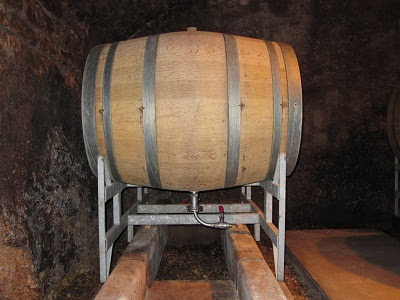I’ve written about protecting the vines from fungal disease before, but I thought some readers might be interested in what actually gets sprayed on the vines during the course of a year. But first a bit of context:
Grapevines are very sensitive to fungal diseases. In almost every wine producing region it is necessary spray fungicides to ensure a commercial crop. In Burgundy, with our rather damp summer climate, an unprotected vineyard would produce nothing most years. See below an intentionally unsprayed witness section of my Bourgogne vineyard; ravaged by Mildew and Oidium it will not make it into the wine!

More context: I have been farming organically since 2005. A significant implication of this is that it restricts the choice of fungicides to simple compounds which are assumed safe, because of their everyday nature. Since 2005 the only fungicides that I have used are: Sulfur, various salts of Copper, skimmed milk, whey, and Fenugreek flour.
Unsurprisingly these products are less effective than the synthetic fungicides available to non-organic farmers. In practice this means that an organic grower will spray more often to achieve the same result, and in a very difficult year (say roughly 1 in 10, in Burgundy) is likely to lose quantity and/or quality.
I am attracted to the effectiveness of the synthetic fungicides, but wonder whether we know enough about their effects on our health, and that of the environment, to justify their use? I have opened this blog to comments in case anyone wishes to voice an opinion.
In any case I feel more comfortable publishing this spray program than one which might contain molecules called dimethomorph, pyraclostrobin or tebuconazole!

I’ll leave you with a photo of the grapes as assurance that they are healthy!





